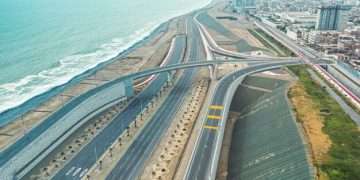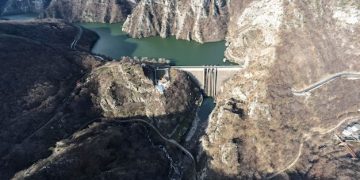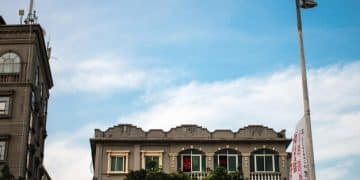Peru Infrastructure: Opportunities for US Construction Firms in 2025
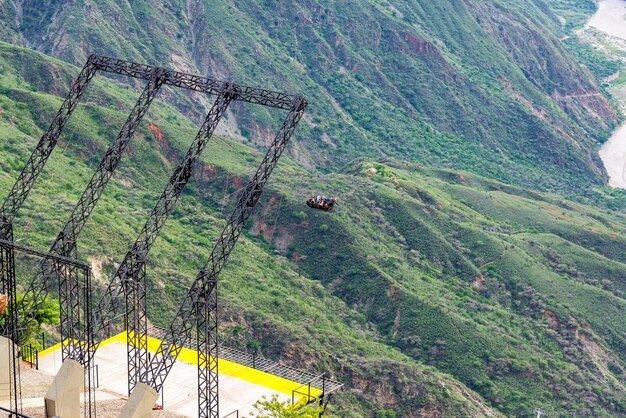
Peru’s ambitious infrastructure development plans present significant opportunities for US construction firms in 2025, driven by the country’s need for modernized transportation, energy, and water systems, and a supportive political climate encouraging foreign investment.
Peru’s burgeoning economy and strategic location are fueling massive investments in infrastructure. For US construction firms, 2025 represents a key window to capitalize on Peru’s Infrastructure Development Plans: Opportunities for US Construction Firms in 2025.
Peru’s Infrastructure Needs: A Landscape of Opportunity
Peru’s growing population and expanding economy have created a pressing need for improved infrastructure. This includes modernizing existing systems and building new ones to support economic growth and improve the quality of life for citizens.
Key Infrastructure Sectors in Peru
Several sectors are experiencing significant investment and development, creating opportunities for specialized construction firms.
- Transportation: Roads, railways, ports, and airports are crucial for connecting Peru’s diverse regions and facilitating trade.
- Energy: Demand for reliable and sustainable energy is driving investments in power plants, transmission lines, and renewable energy projects.
- Water and Sanitation: Addressing water scarcity and improving sanitation infrastructure are priorities for the Peruvian government.
These sectors require expertise in various construction specialties, including civil engineering, structural design, and project management.
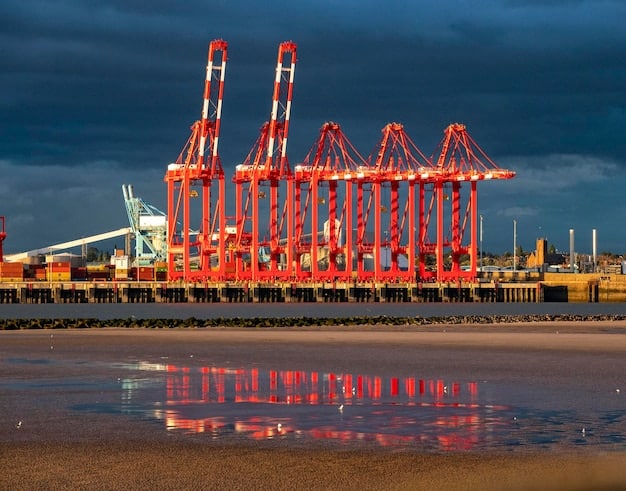
Peru’s commitment to improving its infrastructure is evident in the numerous projects planned and underway. These projects aim to enhance connectivity, boost economic growth, and improve the overall quality of life for Peruvians.
Government Initiatives and Investment Climate
The Peruvian government plays a vital role in facilitating infrastructure development through various initiatives and policies. Understanding the investment climate is crucial for US firms looking to enter the market.
Public-Private Partnerships (PPPs)
PPPs are a popular mechanism for financing infrastructure projects in Peru, allowing the government to leverage private sector expertise and capital.
Peru has a relatively stable political environment in the region, fostering a sense of predictability and encouraging foreign investment.
- Legal Framework: Clear and transparent regulations govern foreign investment and PPPs in Peru.
- Incentives: The government offers various incentives, such as tax breaks and streamlined permitting processes, to attract foreign investors.
- Transparency: Efforts are being made to improve transparency and reduce corruption in the infrastructure sector.
The stability of the Peruvian government and the attractive investment climate makes it an ideal destination for American companies.
The government’s focus on creating a conducive environment for investment signals a long-term commitment to infrastructure development, benefiting both local communities and international investors.
Opportunities for US Construction Firms
US construction firms possess unique strengths that make them well-suited to participate in Peru’s infrastructure boom. These firms excel in areas such as technology, innovation, and project management.
Areas of Expertise
US firms can bring specialized skills and knowledge to various infrastructure projects in Peru.
US firms often have experience with complex and large-scale projects, making them ideal partners for Peru’s ambitious infrastructure initiatives.
- Advanced Technologies: US firms can introduce innovative construction techniques and materials to improve efficiency and sustainability.
- Project Management: Expertise in project management can help Peru complete projects on time and within budget.
- Sustainability: US firms can promote sustainable construction practices that minimize environmental impact.
Their expertise in these areas can significantly contribute to the success of Peru’s infrastructure development plans.
Challenges and Mitigation Strategies
Despite the opportunities, US construction firms may encounter challenges when operating in Peru. Understanding these challenges and developing mitigation strategies is essential for success.
Potential Obstacles
Navigating the regulatory landscape and cultural differences can be challenging for foreign firms.
Some regions may be more difficult to work in due to geographical challenges, logistics, or socio-political issues.
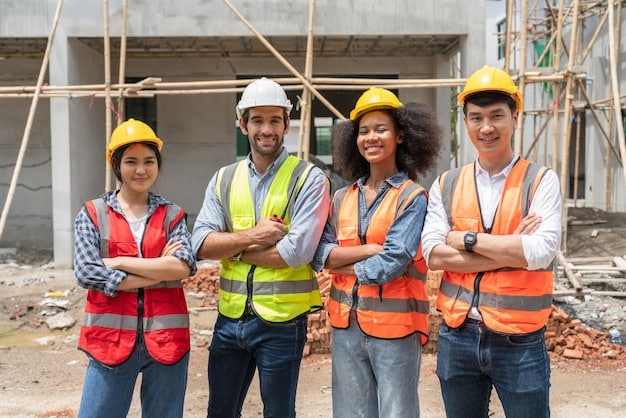
- Regulatory Hurdles: Understanding and complying with local regulations can be complex.
- Cultural Differences: Effective communication and collaboration require cultural sensitivity.
- Logistical Challenges: Access to remote areas and supply chain management can be difficult.
Being aware of these challenges and planning accordingly can help US firms minimize risks and maximize their chances of success.
By addressing these issues proactively, US firms can build strong relationships with local communities and stakeholders, fostering a collaborative and mutually beneficial environment.
Case Studies of Successful US-Peru Partnerships
Examining successful collaborations between US firms and Peruvian entities can provide valuable insights for companies looking to enter the market. These case studies highlight best practices and lessons learned.
Examples of Success
Several US firms have already successfully completed infrastructure projects in Peru, demonstrating the potential for mutually beneficial partnerships.
These partnerships highlight the importance of cultural sensitivity, effective communication, and a strong commitment to local communities.
- Transportation Projects: US firms have participated in the construction of highways, bridges, and airports in Peru.
- Energy Projects: Collaborations in renewable energy projects, such as solar and wind farms, have been particularly successful.
- Water and Sanitation Projects: US firms have contributed to improving water infrastructure and sanitation systems in various regions.
By learning from these successes, US firms can develop effective strategies for entering the Peruvian market and building strong, sustainable partnerships.
These firms have demonstrated that with careful planning, cultural understanding, and a commitment to excellence, US companies can thrive in the Peruvian market and contribute to the country’s development goals.
Strategies for Entry and Growth
To successfully enter and grow in the Peruvian market, US construction firms need to develop a comprehensive strategy that considers market dynamics, regulatory requirements, and cultural nuances.
Key Strategies
Effective market research, building local partnerships, and adapting to local conditions are crucial for success.
A long-term perspective and a commitment to sustainability can differentiate US firms and build lasting relationships.
- Market Research: Thoroughly research the Peruvian market to identify specific opportunities and potential challenges.
- Local Partnerships: Collaborate with local firms to gain access to local knowledge, resources, and networks.
- Cultural Adaptation: Adapt business practices and communication styles to effectively engage with Peruvian stakeholders.
By implementing these strategies, US firms can position themselves for long-term success in the Peruvian infrastructure market.
| Key Aspects | Brief Description |
|---|---|
| 🏗️ Infrastructure Needs | Growing economy demands better transportation, energy, and water systems. |
| 🤝 Government Support | PPPs, legal framework, and incentives encourage foreign investment. |
| 💼 US Firm Advantages | Expertise in tech, project management, and sustainable practices. |
| 🌍 Strategies for Success | Market research, local partnerships, and cultural adaptation are key. |
FAQ
▼
Peru needs improvements in transportation, including roads, railways, ports, and airports. Energy infrastructure and water and sanitation systems also require significant upgrades and expansion.
▼
The government supports infrastructure development through Public-Private Partnerships (PPPs), a clear legal framework for foreign investment, and various incentives like tax breaks and streamlined permitting.
▼
US firms bring advanced technologies, expertise in project management, and a focus on sustainable construction practices. They are also experienced with complex and large-scale projects.
▼
Challenges include navigating regulatory hurdles, cultural differences, logistical challenges in accessing remote areas, and supply chain management difficulties when working in certain locales. Cultural sensitivity is key.
▼
Successful strategies include thorough market research, forming local partnerships to leverage local knowledge, and adapting business practices to align with Peruvian culture and communication styles.
Conclusion
Peru’s ongoing infrastructure development offers substantial opportunities for US construction firms in 2025. By understanding the market’s needs, leveraging government support, and implementing effective strategies, US firms can establish a strong presence in Peru and contribute to the country’s economic growth.
